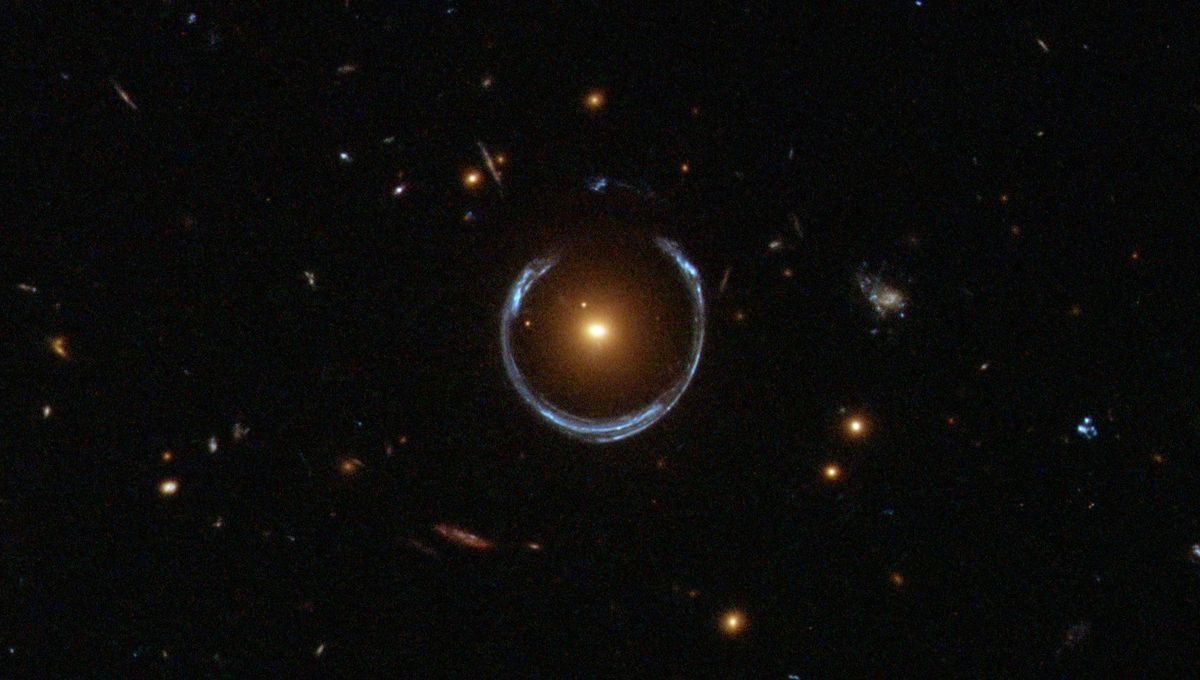
If size doesn’t matter, then explain this: The Cosmic Horseshoe is a gravitationally lensed system with the foreground galaxy being one of the heaviest in the known universe, hundreds of times our own galaxy. It is so heavy that it warps space-time to such a degree that the light of a background galaxy is distorted into a horseshoe. Inside that galaxy sits an equally impressive supermassive black hole. According to the latest study, this could be the biggest ever found.
There have been several claims in the last decade about the most massive black holes. They are all in the several tens of billions of times the mass of the Sun and are found in the core of equally humongous galaxies. The uncertainty in their masses is equally big, in the tens of billions of solar masses. But not for this one.
The ultramassive black hole at the center of the Cosmic Horseshoe is 36.3 billion times the mass of the Sun, with an uncertainty of about 6 billion solar masses. This claim has used a tried and tested method, which has not been used on all the other “most massive” candidates, and the team is pretty confident about it.
“This is amongst the top 10 most massive black holes ever discovered, and quite possibly the most massive,” co-author Professor Thomas Collett, from the University of Portsmouth, said in a statement.
“Most of the other black hole mass measurements are indirect and have quite large uncertainties, so we really don’t know for sure which is biggest. However, we’ve got much more certainty about the mass of this black hole thanks to our new method.”
Most supermassive black hole masses are estimated when the black hole is active, usually based on the accretion. This object is not active, so researchers used a method usually for more local supermassive black holes, not one 5 billion light-years away.
They looked at how the black hole’s gravity warped the light that passes near the black hole. They also looked at the speed of stars in the inner region. They are moving very quickly, at almost 400 kilometers (250 miles) per second. These measurements gave them a more confident value of the black hole mass.
“This discovery was made for a ‘dormant’ black hole – one that isn’t actively accreting material at the time of observation. Its detection relied purely on its immense gravitational pull and the effect it has on its surroundings,” added lead author Carlos Melo of the Universidade Federal do Rio Grande do Sul in Brazil.
“What is particularly exciting is that this method allows us to detect and measure the mass of these hidden ultramassive black holes across the universe, even when they are completely silent.”
The work also provides new insights into the relationship between supermassive black holes and their host galaxies. These are believed to grow together. The Cosmic Horseshoe is also a Fossil Group galaxy, a galaxy at the end of its evolution, having consumed all its bright companions.
“It is likely that all of the supermassive black holes that were originally in the companion galaxies have also now merged to form the ultramassive black hole that we have detected,” said Professor Collett. “So we’re seeing the end state of galaxy formation and the end state of black hole formation.”
The study is published in the Monthly Notices of the Royal Astronomical Society.
Source Link: New Monster Black Hole 36.3 Billion Times Our Sun May Be “Most Massive” Ever Found